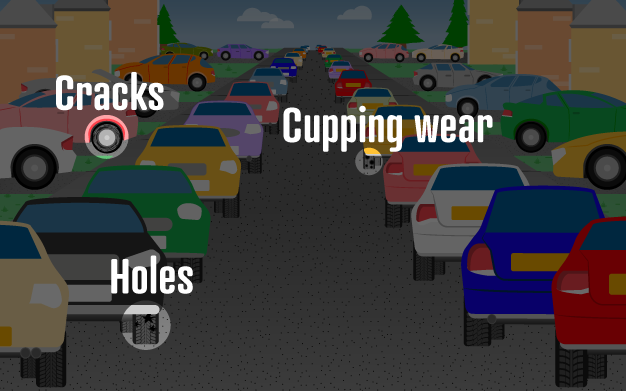The challenging hazard perception puzzles have been released ahead of winter – with driving conditions set to worsen over the coming weeks
Reckon you’ve got a good eye for spotting driving dangers?
A selection of brand-new brainteasers are putting the nation’s hazard perception skills to the test – inviting UK drivers to pick out the problems in illustrated scenes.
Created by motoring sales experts Vertu Motors, the puzzles have already stumped plenty of experienced drivers – with the current record for resolving all three scenarios standing at 45 seconds.
The cartoons have been released on the eve of winter – with road conditions expected to worsen considerably over the coming weeks – and are intended to help drivers sharpen their skills at a crucial time. According to the AA, drivers should be considering winter tyres from October (or when the temperature starts to drop below seven degrees Celsius).
As the weather starts to turn, it’s worth having a go at these brainteasers to make sure your skills – and tyres – are up to scratch for the chillier season.
Ready? Have a go at them below!
Can you find the hazardous tyres stuck in traffic?
See main image
Can you find the hazardous tyres in the garage?
Can you find the hazardous tyres on the driveways?
The answers
Feeling confident? Here’s the full set of answers below – accompanied by a short explanation of each hazard you should have spotted.
Peeling
A common problem with older tyres, rubber peeling from the sidewall can be very dangerous – potentially causing blowouts when travelling at high speeds. Be sure to check your tyres regularly, as peeling is often visible upon close inspection.
Blister
Often caused by impact damage, such as hitting kerbs or potholes in the road, blisters are small lumps (or ‘bubbles’) in the tyre that must be repaired or replaced immediately. Again, if left unattended, blisters may lead to tyre blowouts at high speeds.
Side wear
Side wear is the erosion of tyre treads on the outer rim of the wheel, often the result of consistently under-inflated tyres. Side wear tends to leave the outside of tyres looking and feeling smooth, which can cause problems. Check your tyre pressure every two weeks this winter to keep levels safe and within manufacturing guidelines for your car.
Nail in tyre
Whether it’s a nail, sharp stone, or chunk of glass, any foreign object lodged in a tyre needs to be addressed as soon as possible. These sharp hazards cause flat tyres – or blowouts in the worst case scenario.
Cuts
Cuts in the sidewall lead to air escaping – which will eventually result in a flat tyre. Make sure you get your tyres checked out if you ever find any slits or fissures, no matter how small.
Centre wear
The opposite of side wear, centre wear is when the middle of your tyre treads are eroded to a smooth surface. Where side wear is typically caused by under-inflated tyres, centre wear is likely due to over-inflated tyres. Keep your tyre pressure within your car’s manufacturing guidelines to reduce the chances of centre wear occurring.

Cracks
When tyres are overexposed to sunlight, it can lead to the degradation of oils and chemicals in the rubber, meaning cracks will begin to appear. When you start to notice cracks, it’s time to get your tyres changed as soon as possible, as this is one of the most reliable signs of the rubber coming to the end of its lifespan. You can arrange for your tyres to be checked and changed over on Vertu Motors tyre page.
Holes
While small holes tyres do not necessarily cause serious damage, they can lead to a slow puncture and deflation over time. If you ever spot a small hole in a tyre – don’t chance it. Take the afflicted tyre to be repaired or replaced at the first opportunity.
Cupping wear
Cupping wear is when smooth circles appear on the tyre tread, typically in a straight line. This is an uncommon type of wear, but can arise on some vehicles due to structural issues elsewhere, such as a poor suspension or old shock absorbers.

A Vertu Motors spokesperson commented: “The winter tyre changeover is a major part of car ownership in the UK, especially once October rolls around.
“Ensuring your tyres are road-safe keeps you and your car safe from slippery surfaces – especially that dreaded black ice – which is so crucial for morning commuters!
“The main thing to know is what the signs of tyre damage are and what you need to do to get them road-safe again. That’s where Vertu Motors’ winter health check can be a real life-saver – just simply knowing the signs in advance could prevent bigger problems arising when the cold snap really comes down hardest.”
For further insights about Vertu Motors, visit the Vertu blog.
